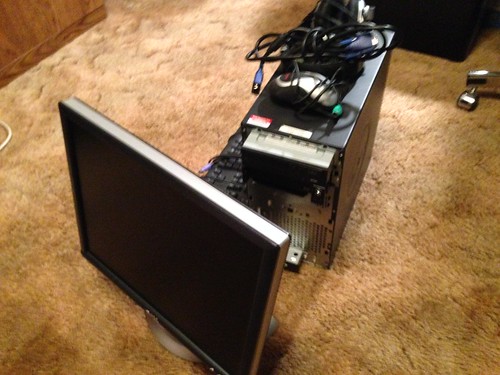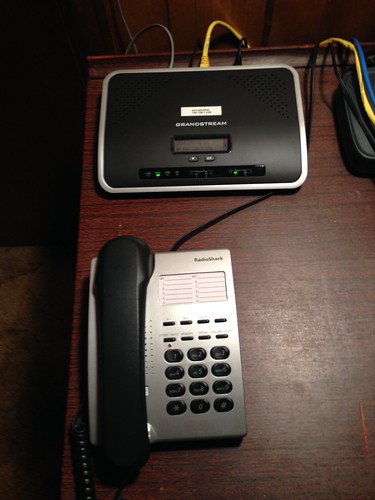
In an effort to clear out some of the older computer gear, I replaced the Dell with an Asterisk appliance: a Grandstream UCM6102, which is a purpose-built off-the-shelf IP PBX based around an embedded processor with an ARM core. It's about the size of a paperback book... or a Kindle, if you prefer.

The new device supports my analog business line that I still insist on maintaining, and even an old Radio Shack analog phone that is an antique itself and which I use just for testing. It works just fine with the SIP phone in my home office. My dial plan changed a bit, as I accommodated the new system's way of doing things. Since I'm the only user, this was a minor issue.
I took the old PC to be recycled. Just before it was carted off, I used my iPhone to take a photograph of its company asset tag, and of the Dell service tag on the back. It was only when I got home that I realized it was Digital Aggregates Corporation asset #1 (although that probably has more to do with when I started using asset tags to keep track of company property than anything else.)

I looked its service tag up on the Dell web site and was told that my system shipped in August 2005. This old Dell PC was at that time the fastest computer in the Palatial Overclock Estate. I was more than a little surprised to discover that, eleven years later, it was still the fastest computer in the house, on a per processor core basis.
Dell lists it as a singe-core Pentium 4 processor at 3 GHz. My second oldest Linux system is a four-core Q6600 processor at 2.4 GHz. My newest Linux system is an eight-core i7 processor at 2.8 GHz. My MacBook Pro runs at 2.8 GHz, and my MacMini desktop at 2.6 GHz.
I have written before at length about the transition from higher clock speeds to multiple cores, and the problems this entails with taking advantage in software of this perhaps hypothetical increase in performance. But I didn't expect to be faced with this evolution in such practical terms.
I'm having some second thoughts.

No comments:
Post a Comment